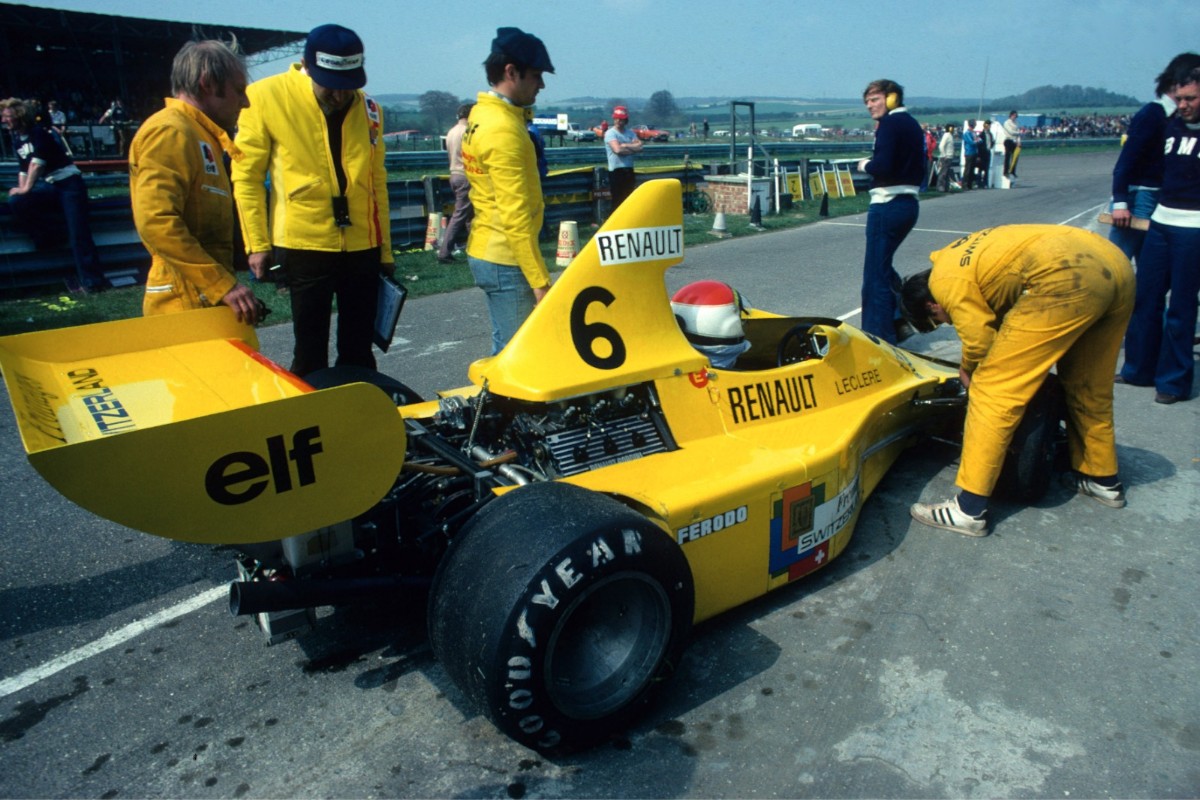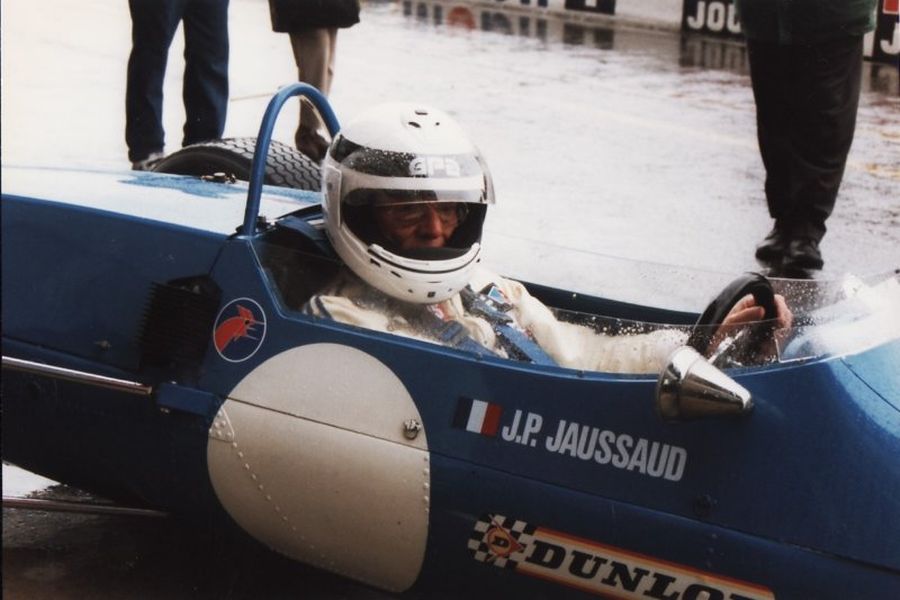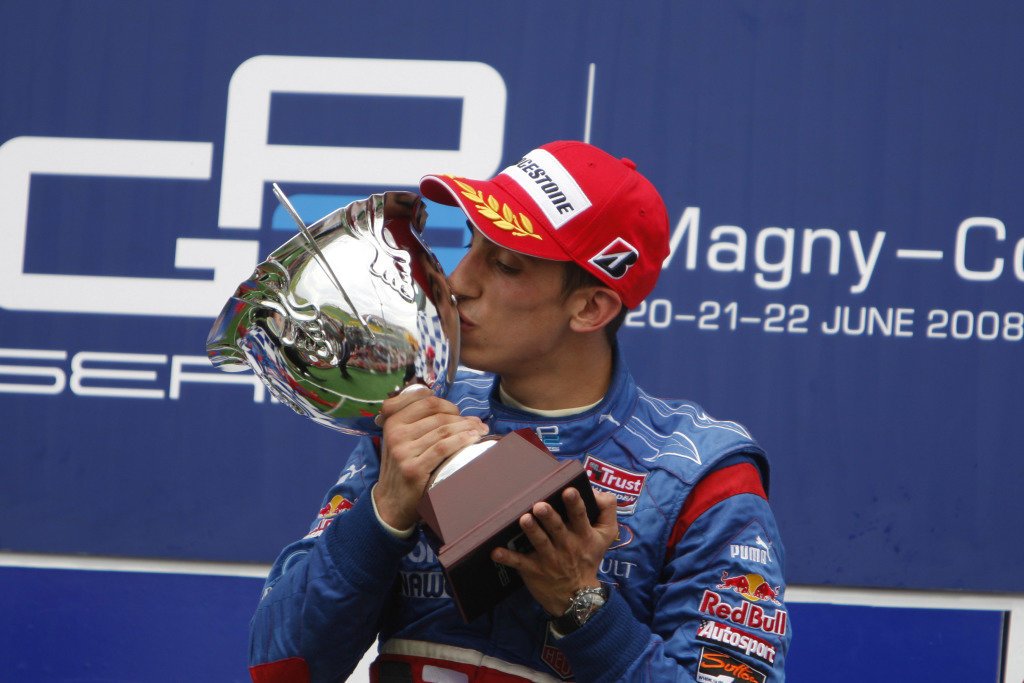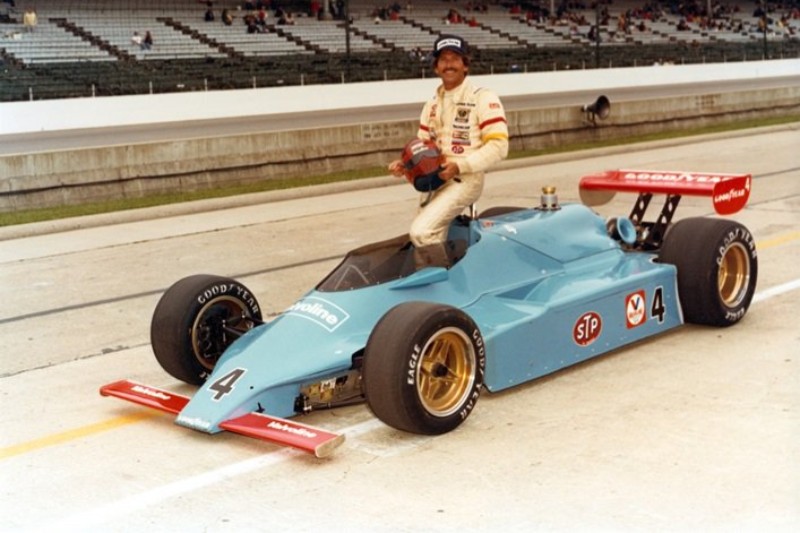
Photo: DPPI / Renault Sport
Nobuharu Matsushita’s win in last weekend’s F2’s feature race at Barcelona was an unlikely success from 18th on the grid, but it wasn’t the lowest that a driver has come from for victory in F1’s primary feeder series
Since European Formula 2’s creation in 1967, there has been a continuous line of single-seater series that have acted as the primary feeder championship to Formula 1. In 1985, the most famous of the F2 championships across the world at that time was replaced by the FIA’s International Formula 3000 series, which then started to wane at the turn of the century and was replaced by GP2. In 2017, the same series adopted the name originally used by the pinnacle of sub-F1 single-seaters: Formula 2.
It was only two years ago that it essentially became a new FIA-administered series again, with a halo-shod car also boasting more complex aerodynamics and an increase in dimensions to reflect F1’s own literal growth.
A top car in F2 in the late 1960s would have had a wheelbase of around 2330mm, but the F2 car of today is a considerably longer 3135mm. The smaller cars meant grid capacities were larger back in the day, and F2 revolved around a heat format for many years. Despite this, there were few races won by drivers starting outside of the top 10.
Two-time Le Mans 24 Hours winner Gerard Larrousse came from 14th to win the 1975 Jim Clark Trophy at Hockenheim, and four years later Eddie Cheever drove from 12th to victory in the Pau Grand Prix.
Stefan Johansson – who manages most of Sweden’s current single-seater stars – won the 1981 Jim Clark Trophy from 13th, and Corrado Fabi won from 12th at Mugello a year later.
F3000 was extremely light on back-to-front winners, as reliability improved and a single chassis supplier became the norm with higher downforce cars.

Johnny Cecotto Jr’s 2012 Hockenheim success
Yannick Dalmas took a dominant win from 14th on the grid in a truly topsy-turvy finale to the ’87 season at Jarama, future Le Mans legend Tom Kristensen won Silverstone’s BRDC International Trophy in 1997 after qualifying 12th – the podium was completed by drivers who had started outside of the top 20 – and Stephane Sarrazin came all the way from 18th to win the next year’s crazy Oschersleben season opener.
Only six have started a race lower than that and made their way to victory, while two others have come notably close to Matsushita’s achievement in Johnny Cecotto Jr (2012 Hockenheim feature race) and Vitaly Petrov (2008 Sepang feature race), whose success marked the only time a GP2 Asia race was won from outside of the top 10.
The statistically unlikely six range from the 1960s to 2016, with the 2010s being the most prolific – due more to varying tyre strategies and more frequent safety car appearances than the reversed-grid format of sprint races.
Honourable mentions George Russell – 12th (2018 Baku sprint), Tadasuke Makino – 14th (2018 Monza feature) and Artem Markelov – 15th (2016 Monaco feature)
Michel Leclere Equipe Elf Switzerland 1976 Salzburg Festival Prize
Grid: 19th (5.540s off pole) Race: won by 5.61s

Photo: Dutch Photo Agency / Renault
French oil company Elf had a big involvement in Renault’s first foray into F1 as a team in the late 1970s, and preceded that effort with two teams (and chassis via Alpine) of its own in F2. Ex-F2 racer Larrousse led the Alpine-based Swiss team for a few years, and when he left for Renault Sport before the 1976 season he made sure his old team had a supply of its engines.
The Renault Gordini V6, which had been honed in sportscars and was only now allowed to be used in F2, was very quick in pre-season testing and almost snapped up by the factory March team before it stuck with its BMW power. That turned out to be the wrong choice, as the French engine powered the top four in the points – across the Jean-Pierre Jabouille-led Alpine team and the Martini-using Ecurie Elf – come season’s end in a team orders-filled finale at Hockenheim.
But at the Salzburgring the BMW engines really did provide the boost needed down the Austrian circuit’s lengthy straights and banked corners (and a new ‘chicane’ to lower speeds) and Michel Leclere could only put his Elf-run space-frame Alpine chassis 19th on the grid. His team-mate Jabouille fared better to qualify eighth, but still two seconds off the pace.
Leclere gained five spots from retirements for rivals, and kept his tyres alive to rise further up the order over the lengthy 212.85km race. Only nine drivers remained on the lead lap, and Renault got the entirety of its line-up in that group.
Jabouille looked after his car and finished a distant sixth, while Leclerc fought his way past March’s poleman and Thruxton winner Maurizio Flammini for a deserved victory. It was an important success, as Leclere had left March for Elf after the latter’s Jacques Laffite beat him to the 1975 title, and he needed to establish himself against Jabouille in his own team.
He claimed a second points-scoring win at Hockenheim (behind the non-registered Hans-Joachim Stuck), but didn’t score again for some time and ended up being asked to play second fiddle to Jabouille by future Renault F1 boss Jean Sage in the season-ending third Hockenheim race. Leclere obeyed, letting Jabouille past to win the race and title with a few laps to go.
Jochen Rindt Roy Winkelmann Racing 1969 Thruxton
Grid: 19th Race: won by 30.2s

Photo: Dutch National Archive
Jochen Rindt was already a F1 driver, and a renowned master of racing both at Thruxton and in F2, when he took possibly his greatest lower-level single-seater win on Easter Monday in 1969.
Since 1967, Rindt had been racing in F2 as non-points scoring driver with American team Roy Winkelmann Racing in a Brabham BT23, having earned a factory Brabham seat in F1. When Colin Chapman signed him up to race alongside Graham Hill for 1969, RWR was one of the beneficiaries as it secured new Lotus 59 cars and the services of two quality drivers.
Rindt was therefore expected to win at Thruxton, until Matra turned up with reigning F1 world champion Jackie Stewart. In practice it was initially Stewart who was quicker, but after some tweaks to his brakes it was Rindt who ended up fastest.
Before the points-scoring final race, the drivers were split into two heats based on the number they were registered under. As a result, Rindt and Stewart were split up. There was a fun battle between Stewart and his Matra team-mate Jean-Pierre Beltoise in heat one, while Rindt comfortably led in heat two – often two seconds per lap faster than his rivals on a short track – until a puncture threw him to the back of the field.
He made it back to the pits, had the offending wheel changed and still met the chequered flag in a once-lapped 13th place. That of course put him at the back of the grid for the final, while Stewart, Beltoise and Hill filled the front row.
In a race pretty much the same length as a F2 feature race today, Rindt took little over a third of the distance to make his way to the front. This came despite his rev counter failing on the warm-up lap, and reliability worries from the off after team-mate Hill retired with a transmission issue on the new car on just the opening lap.
Rindt’s move on Stewart for the lead seemed inevitable once he was in second place, and he pulled away at a record pace (the new cars were considerably quicker than their predecessors). In the remaining laps, Rindt put half a minute between himself and Stewart in what was only the first time he had beaten the F1 champion on-track in a straight fight.
Jean-Pierre Jaussaud A.S.C.A 1972 Jim Clark Trophy
Grid: 20th Race: won by 13.3s

Jaussaud pictured racing in F3
After Rindt’s untimely death, his domination of Thruxton was honoured in the race then being named after him. Hockenheim did the same after Jim Clark’s death at the circuit, and it often stood as the first big race of the year.
March had started the season on the front foot, with its sophomore driver Niki Lauda leading the points after two podiums in two races. While he needed a hefty bank loan to race (with success) in the series in 1971, Lauda needed luck for his second season as March had a shocker of a year.
In qualifying at Hockenheim, Lauda established himself as the driver to beat for the weekend – despite the presence of more illustrious drivers such as F1 champions Hill and John Surtees, Henri Pescarolo and Francois Cevert.
This time the result was set by aggregate from two heats in which all the drivers competed in, and Lauda had a torrid time in both. A failed fuel pump put him out of the first race just after half-distance, but the high rate of retirements meant damage to his title campaign could be limited by the combined results.
As it turned out, he wasn’t so fortunate. Just nine laps into the 20-lap second race, transmission problems led to a second retirement. For the next five rounds he didn’t see the chequered flag, only scoring again when he made it onto the podium at Imola over three months later.
Jean-Pierre Jaussaud, the 1970 French Formula 3 champion and in later years a winner of the Le Mans 24 Hours twice, had a weekend that was almost the opposite of Lauda’s in his Hart-powered and A.S.C.A-run Brabham BT38.
On one-lap pace he was over 20 seconds slower than Lauda earlier in the weekend, but was a points contender once much of the field was inflicted by mechanical issues. He also looked stronger in the races on his Firestone tyres, while many used Goodyear, and he came from 21st on the grid to win twice on the road for a combined 13.3s victory.
Sebastien Buemi Arden 2008 Magny-Cours sprint race
Grid: 21st Race: won by 6.639s

Photo: Formula 2 / LAT Images
If there was one race in the 2008 GP2 season where you could look at the grid and say that Sebastien Buemi was deserving of a F1 drive with AlphaTauri (then Toro Rosso) for 2009, then the Magny-Cours sprint race was it.
The Arden driver, who had basically a full season of experience at the GP2 level after a half-season in 2007 and an early ’08 GP2 Asia campaign, already had two sprint race podiums to his name but both had come from starting near the front.
At Magny-Cours he qualified fifth but that became a penalised ninth on the grid, and used an undercut strategy in the feature race to try to get a strong result. That effort ended in retirement, and left him with a 21st place starting spot for the next day’s sprint encounter.
A damp track from pre-race rain added an extra variable to allow Buemi to recover, and with nothing to lose he opted to start the race on slick tyres while many at the front started on the full wet compound.
The wet tyre runners made stronger starts in the greasy conditions, and a dry line emerged quick enough to send much of the front half of the field into the pits to change – perhaps too late. Others lost it on their own on a tricky track surface, or clattered into one another like Giorgio Pantano and Vitaly Petrov.
Buemi’s team-mate Yelmer Buurman also made the right tyre choice from the off, although he got to start considerably higher up the grid, while iSport’s Bruno Senna was charging up from 23rd place before he encountered technical issues.
The victory battle came down to a straight fight between the Arden drivers once all of the pitstops had played out, and it took a whole lap of side-by-side action for Buemi to successfully pass Buurman. He pulled away at a second per lap after achieving that to take a 6.639s win, with the rest of the field over 20s behind.
A similar story occurred three years prior for Arden, when a qualifying penalty dropped its driver Heikki Kovalainen from third to 17th on the grid for the feature race at the Nurburgring. He made up most of his ground with a stunning first lap, then once his charge slowed down he decided to pit early. This gave him clear air which he made the most of to become the leader of the race once the pitstop sequence was complete.
Buemi’s future Formula E rival Mitch Evans also staged an impressive comeback drive to win the 200th GP2 main series race. He started the 2014 Hockenheim feature race from 14th, and mastered the undercut strategy as tyres wilted in searing heat.
Stefano Coletti Trident 2011 Hungaroring sprint race
Grid: 21st Race: won by 7.293s

Photo: Formula 2 / LAT Images
Changing weather at the Hungaroring in 2011 provided a near repeat of Buemi’s 2008 success, with Stefano Coletti claiming his second win of the year for backmarker team Trident by starting a wet sprint race on slick tyres.
He wasn’t the only driver to take the gamble, but the drivers starting ahead of him didn’t take the punt and after most of them stopped for slick tyres he was within reach of the top 10.
Very shortly after the safety car was summoned when Carlin’s Max Chilton crashed, playing into the hands of Coletti as it brought him even closer to the drivers in front. On the restart he picked off several drivers, with a few more pitting, and after two laps of green flag action he was in a podium position.
The two drivers ahead, Racing Engineering’s Christian Vietoris and DAMS’ Romain Grosjean, were also on slicks but that proved of no benefit when rain started to fall again.
With Vietoris being the first into the corners where the track condition was changing again, he had to be extra cautious. It didn’t take long for him to spin though, and he made contact with Grosjean in the process. Coletti gleefully inherited the lead, then pitted for wet tyres as another safety car period began.
After clearing Addax’s slick-shod Charles Pic on the restart, Coletti romped off to victory. ART Grand Prix’s Esteban Gutierrez, who followed his strategy from 24th on the grid, finished second after a dicey battle with Grosjean.
The next and only time Trident took more than one win in a year was 2014, with the first of two successes for Johnny Cecotto Jr being earned at Barcelona from 16th on the grid. A chaotic opening lap enabled him to move straight up to seventh before a safety car, and on the restart he moved up to fifth. His alternate strategy, starting on the harder compound tyre, also proved quicker and after his late stop he only had to pass one car for victory.
Antonio Giovinazzi Prema 2016 Monza feature race
Grid: 21st (0.054s from pole, excluded from qualifying) Race: won by 1.457s

Photos: GP2 Media Service
Illegal tyre pressures in qualifying forced Antonio Giovinazzi to start from the back of the grid for the 2016 Monza feature race, right in the midst of a title battle with Prema team-mate Pierre Gasly.
His title hopes were saved when on lap 15 of 22 of that race, a collision between Rapax’s Arthur Pic and Carlin’s Sergio Canamasas brought out the safety car. The alternate strategy was highly unlikely to work without a safety car, but Russian Time’s Rafaelle Marciello, Rapax’s Gustav Malja, ART’s Nobuharu Matsushita and Giovinazzi all tried it.
The timing of it meant that Gasly went from a comfortable lead to fourth behind several cars who were conveniently able to pit for new softer tyres and still come out ahead. One of those was Giovinazzi, in third behind Marciello and Malja. Matsushita found himself out of that picture by pitting as the safety car was deployed, but the confusing race picture was due to the safety car catching previous leader Gasly, and not Marciello.
The front trio initially had almost a lap on the entire field including while they made their pitstops, but the rest of the pack was allowed to go through and catch up, albeit having lost track position and being on inferior rubber at this point.
After surviving a challenge from team-mate Gasly on the restart with just a handful of laps to go, Giovinazzi was able to attack and pass Malja on the penultimate lap, while a DRS-assisted pass on the final lap on countryman Marciello allowed him to take an unlikely win – one that was critical in the context of the title fight with outsider Marciello and leader Gasly.
To top it off, he took a podium in the sprint race having started eighth, behind Racing Engineering’s Norman Nato and Gasly.
Prema also took the first out-of-the-top 10 win in F2’s new 18-inch tyre era, with Robert Shwartzman claiming the Hungaroring feature from 11th on the grid last month.
And over in Indy Lights…
Dennis Firestone Wilbur Bunce Racing 1978 Ontario race two
Grid: 24th Race: won

Firestone at the 1981 Indianapolis 500
The feeder to North America’s premier single-seater series has tended to struggle to attract grids larger than 10 cars in recent seasons, and was cancelled entirely this year due to the coronavirus pandemic taking further hits to its entry list.
In the past it could reach grids of 20 or more cars, but this wasn’t entirely common, and oval races tended to be led from the front rather than provide enough overtaking opportunities for backmarkers to take surprise wins.
Two exceptions to that in the last decade do exist, with Schmidt Peterson Motorsports’ Esteban Guerrierri winning the prestigious Freedom 100 on the Indianapolis Motor Speedway oval from 11th on the grid in 2012, and Team Moore Racing’s James Hinchcliffe winning at Chicagoland Speedway from 13th in 2010.
The generation of Indy Lights machinery previous to that were very different beasts, but still comparable, and Mark Taylor also came from 13th and last on the grid to win at Kansas Speedway in 2003 on the way to that year’s title.
Prior to that, you have to go all the way back to Indy Lights’ second ever season in 1978 to find a winner who started their car from lower than 10th place.
Ontario Motor Speedway, California’s since-demolished answer to the world-famous Indianapolis oval, held the first ever Indy Lights double-header on September 2 1978 which not a huge amount is known about.
Australian rookie Dennis Firestone took pole for the first of the two races, but didn’t even make it to half-distance of the 100km race. That result (or lack of) set the grid for the second run later in the day, where Firestone charged from the back and beat his title rival Bill Alsup in a straight fight for glory.